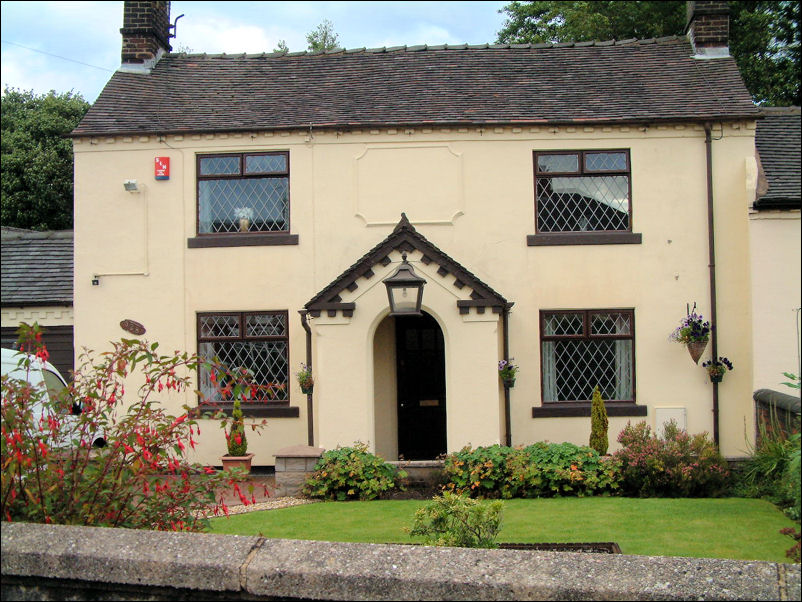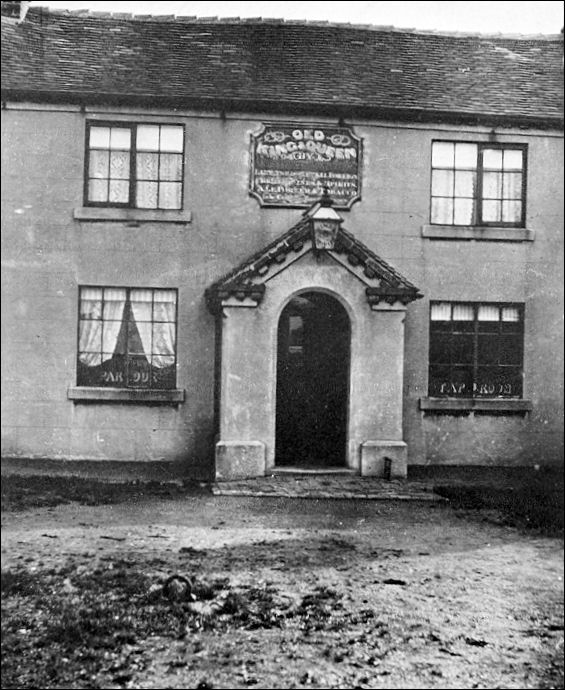|
|
|
Old Pubs of the Potteries
![]()
![]()
![]()
next: The
Cricketers Arms, Longton
previous: The
Jug Inn, Sneyd Street, Cobridge
contents: index of
old pubs of the Potteries
|
The Old
King and Queen Inn, Sneyd Street
Andrew Dobraszczyc's notes This row of old cottages and an old pub illustrate this.......
|

map showing
the Old King
and Queen Inn
on Sneyd Street
from an 1851 Burslem drains map

the Old King and Queen Inn in
2009

the Old King and Queen Inn in
1892
- the bull baiting ring can be seen fastened in
the ground in front -
photo: © the Warrillow collection
|
The first landlord of
the Old King and Queen Inn for whom we have any details was Robert
Edge who was the tenant between 1818, when he is listed in a trade
directory, and 1830 when he appears in a survey of the Sneyd estate.
His successor was William Barlow whose son, John, had taken over by 1851. A photo of the Old King and Queen shows a bull baiting ring set in the floor in front of the inn.
"The baiting of bulls with dogs specially bred for their courage, viciousness and tenacity was already many centuries old when this group was produced and virtually every village in the land had its bull ring where large crowds would gather and lay wagers on the outcome, indeed, it was something of a national sport from the Middle Ages right up to the 18th century. It is thought that the sport had its origins in practicalities of the butchers trade, bulls being far too large, wary and dangerous to be led by the nose to slaughter and needing to be subdued first, and besides, it was said that the baiting tenderized the flesh making it more appealing and therefore valuable to customers. The pit bull or bulldog was certainly bred for this
specific purpose and were known actually known as 'butcher dogges'. In
the court roll of the manor of Barnard Castle it is stated that 'no
butcher shall kill any bull two years old upwards, unless he first be
brought to the ring and sufficiently halted'. It seems that it was
actually necessary for butchers, both practically and under law to
practise bull baiting. Jeff Hatt
|
next: The Cricketers Arms, Longton
previous: The Bulls Head, Sneyd Street, Cobridge
contents: index of old pubs of the Potteries